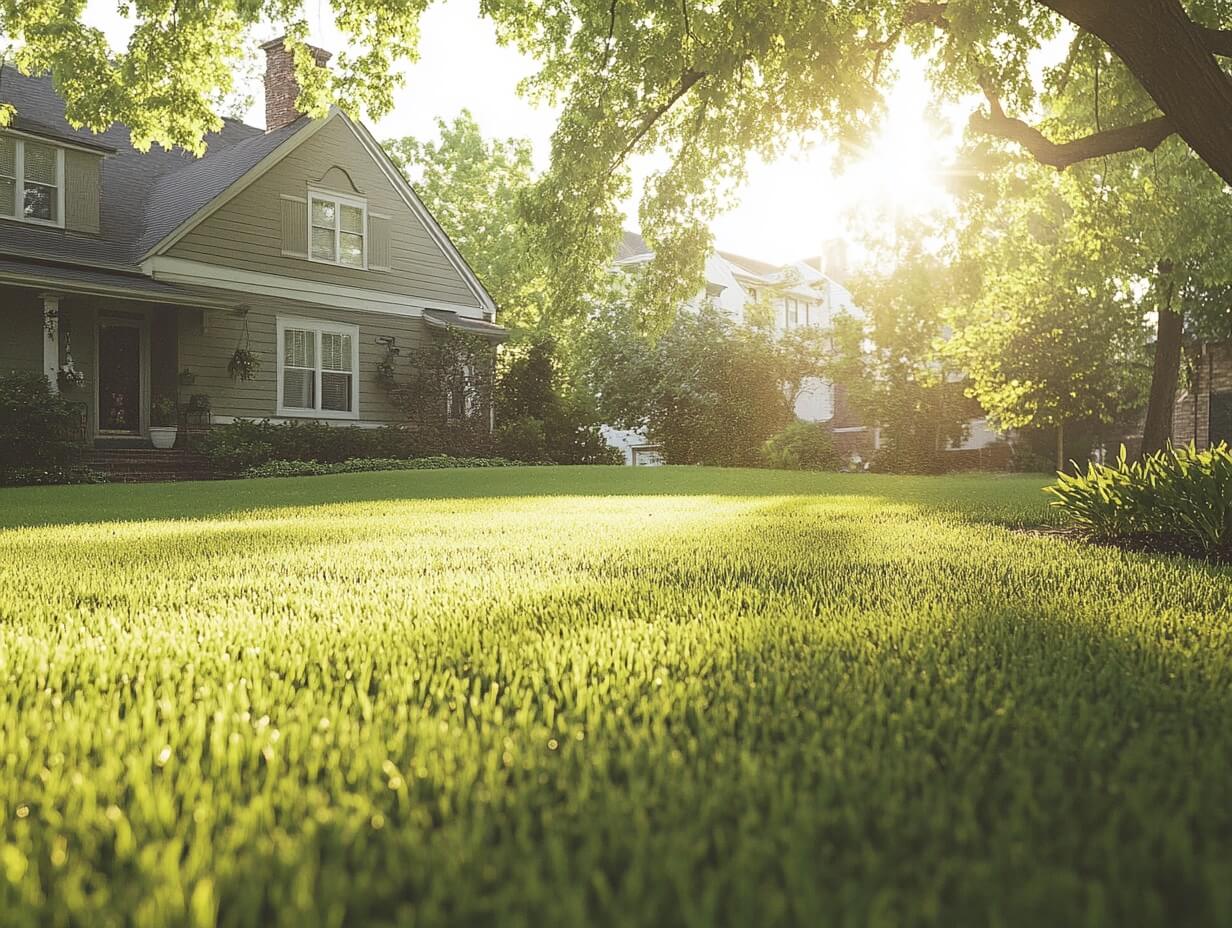Table of Contents
Adequate water is vital for early sod care. Temporary watering for new sod is about more than just keeping your grass green—it fosters deep root growth and long-term lawn health. By following an effective lawn watering schedule in the early days, homeowners can lay the foundation for a lush, resilient lawn.
Understanding Temporary Watering for New Sod
Temporary watering refers to the irrigation schedule for newly laid sod. The period following installation focuses on intense hydration that gradually tapers as the sod establishes itself. Temporary watering in the initial stages supports grass health optimization and helps prevent the issues that arise when sod dries out before developing deep roots.
New sod must adjust to the soil, develop a solid root system, and endure higher evaporation rates. Temporary watering aids in these processes by supplying enough moisture for roots to bond with the soil. This approach boosts resilience and reduces the risk of sod lifting, paving the way for long-term growth.
The Science of Water Absorption in New Soil
Sod’s structure is like a fibrous mat that requires constant watering to avoid drying out. During this period of early sod care, it’s essential that water penetrate through the sod into the soil, where roots can begin expanding.
During the first few weeks following installation, the sod’s roots deepen and spread. Regular hydration allows the sod to develop a robust root system that extends downward, enhancing drought tolerance and resistance to wear. Temporary watering for new sod is essential in these early growth stages.
Key Steps to Optimize Temporary Watering
Pre-Watering Before Installation
Pre-watering the soil before installation can make a significant difference. Saturating the soil to a moderate moisture level creates an environment where the sod can latch onto the soil more easily. To test for adequate moisture, simply press into the ground; the soil should be slightly cool and pliable, but not soggy.
Initial Watering Immediately After Installation
Following the installation of the sod, provide a thorough watering. Soak the sod to its full depth, ensuring complete contact between the sod and the soil below. A sprinkler provides even saturation with less risk of pooling in specific areas.
Day-by-Day Watering Schedule for the First Week
The first week is a critical period for your sod’s establishment. For the first two days, water the sod twice daily to prevent any dry patches. For the remainder of the week, water once daily but ensure a deep soak. Keep in mind that you must adjust according to your climate; in warmer regions, more frequent watering may be required to counter evaporation.
Weekly Adjustments and Monitoring (Weeks 2-4)
Once the sod begins rooting, the frequency of watering can be reduced, but the depth should be maintained. During weeks 2 through 4, water every other day, then switch to twice weekly. Watch for signs that indicate strong root formation such as resistance to a light tug.
Optimizing Water Techniques for Better Sod Health
The ideal time for watering new sod is early in the morning, allowing moisture to soak in before evaporation peaks at midday. This also minimizes the risk of disease and supports grass health optimization.
Ensure even water distribution with sprinklers, soaker hoses, or gentle hand watering, but avoid excessive pressure that can cause runoff. A simple test for moisture levels involves inserting a screwdriver into the sod. If the soil is moist, the screwdriver should go in easily. The goal is consistent moisture down to the soil layer beneath the sod, maintaining the optimal hydration level.
Common Watering Mistakes and How to Avoid Them
Overwatering may lead to root rot and fungal issues. Watch for yellowing patches and a spongy feel underfoot. Insufficient watering, on the other hand, may result in brown patches, along with lifting that indicates the sod is not rooting properly. If dry spots appear, increase hydration and check the moisture levels regularly.
Ensuring Long-Term Sod Health Post-Temporary Watering
After the first four weeks, the sod should be well-rooted. Watering can shift to a more sustainable routine of once or twice weekly, but with a greater duration for deeper moisture penetration. Once well established, the sod will resist lifting, have a uniform colour, and withstand light foot traffic.
Conclusion
Following the sod growth tips and temporary watering practices, your lawn will provide you with long-lasting beauty and resilience. For expert advice, explore our sod installation services, learn about sod site preparation, or contact us today for a consultation!








